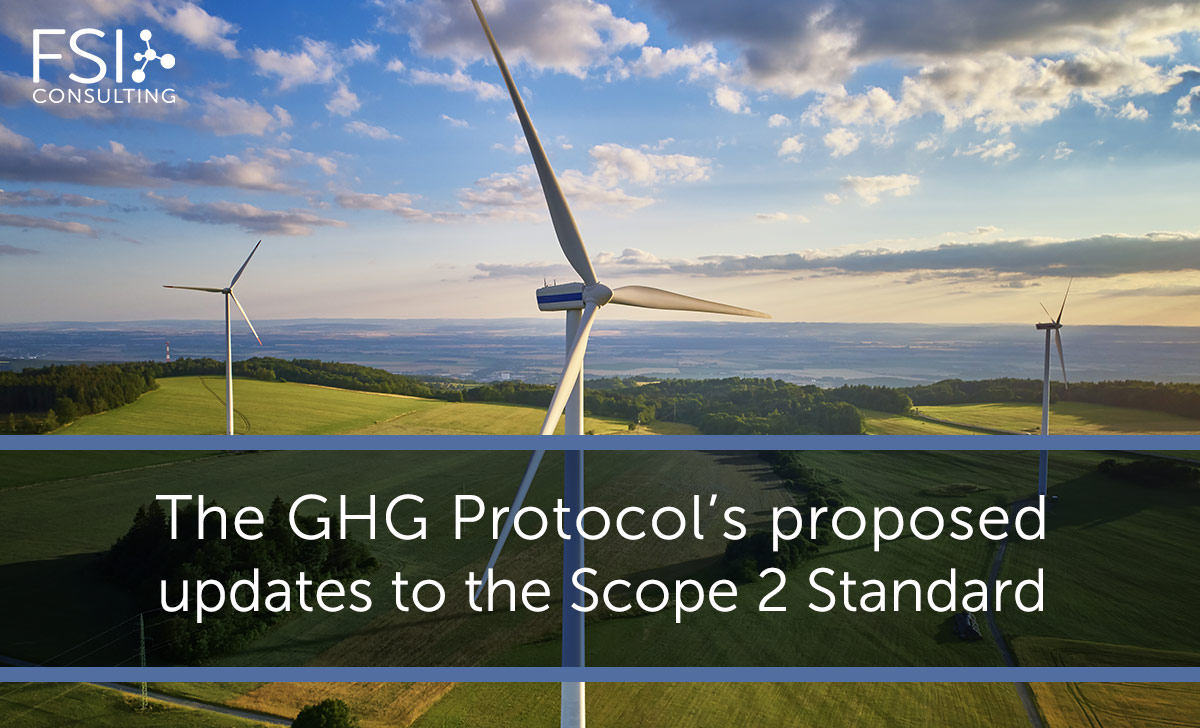
Overview
Launched in 1998, the Greenhouse Gas Protocol (GHGP) is the predominant global greenhouse gas accounting Guidance, used by organizations of all sizes and geographies. GHG regulations, from California’s SB 253 to the EU’s CSRD, all accept the use of the GHGP for carbon accounting and reporting.
Since 2015, the GHGP’s Scope 2 Emissions Guidance for calculating electricity-related emissions has remained largely unchanged. Currently, the GHGP is working through updates to the Scope 2 Guidance to enhance reporting quality and further facilitate the green energy transition. These updates are expected to be finalized in 2027, with requirements phased-in thereafter.
The question is – how will the proposed changes impact scope 2 GHG accounting?
Scope 2 Today
Today, scope 2 follows a ‘dual reporting’ methodology, in which we report both the location-based method (LBM) and market-based method (MBM) for scope 2 emissions. The LMB reflects the average emissions of electricity generation by the regional grid and cannot be influenced by the reporting entity.
Scope 2, market-based emissions reflect ‘market’ instruments used by the entity. This comes in the form of supplier-specific emissions factors, Power Purchase Agreements (PPAs), Renewable Energy Certificates (RECs), Energy Attributable Certificates (EACs), and others. The market-based method allows the entity to reduce their electricity emissions without relocating their operations.
As a result, the market-based method has facilitated the growth of renewable energy, with companies being able to purchase and claim PPAs, RECs, EACs, and other forms of zero-emissions energy, regardless of location. Illustrated below, an office located in Georgia cannot influence its location-based grid, but can reduce its emissions burden through utility-provided RECs, with renewable energy being generated well outside of the local grid.

Figure 1: Location vs Market-Based Scope 2 Reporting
What’s Under Discussion?
The GHGP working group is working through several proposed revisions to the Scope 2 Guidance. These include, but are not limited to:
- MBM: (i)Hourly time-matching of electricity load, rather than annually, (ii) narrowing of the boundary deliverability for contractual instruments (RECs, PPAs, etc.). This will require the purchase of renewable energy instruments within the same regional grid where the company operates.
- LBM: Clarify its purpose as a grid-intensity inventory method and require more precise emission factor sourcing from publicly-available sources.
- Focus on Impact: Emphasize improvements to the Scope 2 Guidance towards more accurate, real-time electricity emissions reporting to facilitate GHG emissions reduction.
- Interoperability Improvements with key mandatory and voluntary climate disclosure and target-setting programs (CSRD, SB 253, ISSB, and SBTi).
Impacts on Scope 2
Under the current proposed revisions to the Scope 2 Guidance, we can expect to see greater complexity and stringency around scope 2 LB and MB reporting alike. The advancement of hourly emissions reporting from annual is meant to drive investment in clean energy where it is needed most – the hours where the sun doesn’t shine and the wind doesn’t blow.
See the table below illustrating the impacts of current vs potential revised scope 2, MB reporting:

(For illustrative purposes only)
1 GHG Protocol’s Scope 2 TWG Meeting #15 Presentation. June 4th, 2025.
As a result of the local, hourly reporting methodology, regional investments in diverse forms of renewable energy and battery storage are anticipated to increase, facilitating actual emissions reductions in electricity production further.
What’s Next?
A public consultation will take place later this year. The draft will most likely include key updates, including the hourly and regional revisions. The final updated Scope 2 Guidance is slated to be published around the end of 2027, with a phased-in implementation taking place after.
For more detailed information, visit the GHG Protocol’s website.
About FSI and Our GHG Accounting Services
Looking to improve your GHG reporting practices? Let’s talk.
Full Scope Insights provides fit-for-purpose fractional sustainability program management services. We specialize in developing and executing value-add sustainability strategies for public and private organizations in a cost-efficient manner, including scope 1, scope 2 and scope 3 GHG emissions accounting. Our team of experts possesses the GHG audit experience necessary to produce quality inventories that exceed stakeholder expectations.
Ethan Krohn
Senior Associate
Full Scope Insights
